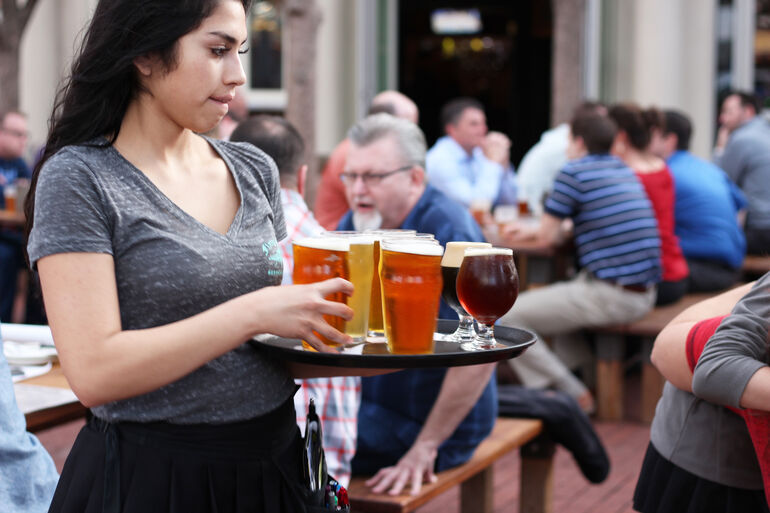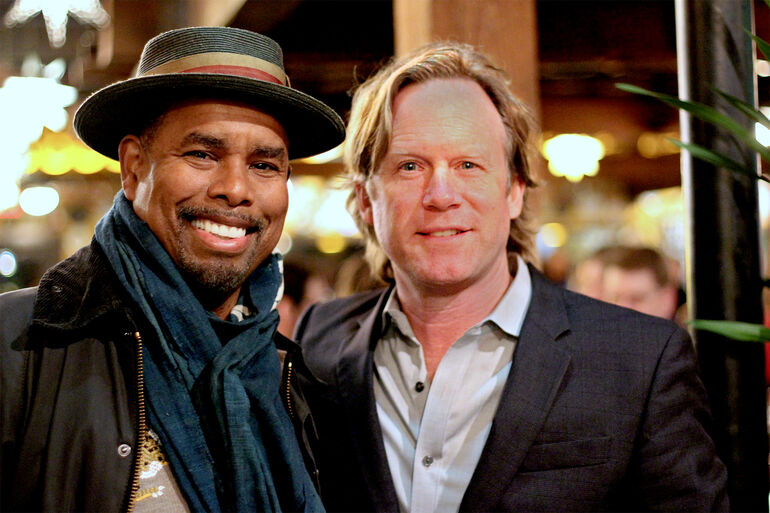Start 14-Day Trial Subscription
*No credit card required

2018 Restaurant Trends
Our Discussion with Keith Schlabs
BC: Brewery taprooms competing for customers with on-premises retail is a hot button topic in 2018. Does Flying Saucer experience any impact from breweries pouring and selling their own beer on-site? Are you witness to any impact on smaller boutique restaurants?
Schlabs: This has been a topic of conversation for a few years now and is certainly filled with the potential for an emotional response. Of course we see an impact to our headcount during the Saturday afternoon brewery tours. We’ve seen our afternoon sales drop off compared to the years before the big local brewery taproom boom. So, we could easily turn to the feeling of animosity.
However, we have to look at the long game. Trends drop off, the allure of Thursday nights and Saturday afternoons at the brewery will wane – making the relationship between brewery and retailer, yet again, integral to a stable market. Simply put: we need each other and always will. Working hard at building a mutually beneficial working partnership is in everyone’s best interest.
BC: Offering locally produced beer seems to be a hot trend in 2018. Does Flying Saucer experience this same demand? If so, how does that impact your selection decisions? Does this prohibit beer from outside your store’s region from gaining a foothold in your restaurants? How does this impact national brands' selections and imports?
Schlabs: We would pull up shy of calling local beer a trend. Since 1995 we have strived to include and, more importantly, promote the local craft beer market. We have sustained a Sunday promotion of $3 local beers through our 22+ years of existence.
Our selection process is based on a very simple philosophy, “local is great, if it’s great local.” We want to be sure that the breweries in our local markets are focused on quality, consistency and — to a degree — diversity. Consistency is the one aspect we really focus on. We know there are growing pains with any young brewery, but until you have an established QA program, we hesitate placing you in our lineup. Our guests have come to expect the beer we offer today to taste the same as it did the last time they ordered it.
Of course, the surge of interest in “local” has put a strain on some nationally distributed brands. It’s worth stressing that we hold both national and local brands to that same strict criteria for our selection process. It helps put everyone on a level playing field and is what helps us manage the impact of the “local trend.” No matter where you’re from, you have to meet our criteria first. “Good Beer to Good People” is our motto and we have to stick to it.
We do fear that those breweries we have grown fond of may pull out of some markets in a climate of blind devotion to local. We’ve seen it happen and we have seen markets shrink down to primarily local and acquired breweries. That makes it very difficult to build an interesting, competitive craft beer portfolio that’s best for our customers. It reminds me of the very early days of craft beer.
BC: How competitive are your tap handles? With so many beers available to consumers today, what is required to win a tap position and to maintain it at your restaurants? Is winning a tap position for an extended period of time even realistic in today’s competitive environment?
Schlabs: Today's market is incredibly competitive. It’s interesting to begin to see the craft breweries working against one another. It wasn’t all that long ago that there were so few craft breweries one would actually help another gain wall or shelf space at a retail account. Now, you find much more infighting for market share.
In regard to what we require for a handle on our tap wall, we go back to those three criteria: quality, consistency and diversity. That diversity comes into play when we look at how we populate our menus. We could easily fall into the trap of hosting 30+ IPAs or just as many stouts since most every brewery produces at least one. If a brewery's portfolio includes less common old world Tripels, Schwarzbier, Quads, Berliner Weisse, etc., our menu planning gets a lot more flexible and therefore interesting. We have started moving further away from what we called the “Rotation Nation,” or putting something new on the wall for the sake of having something new.
And yes. Extended life on a tap wall is very realistic. We’re finding that our frequent Beerknurds appreciate seeing their solid favorite on the wall week to week. We also realized the longer our staff have to familiarize themselves with specific beers, the more knowledge they gain by being able to educate themselves. They pick up nuances of a beer and even between breweries’ interpretations of similar styles. Therefore, they gain that expertise to help guide our guests to beers they’ll most enjoy. This can help bring that craft beer beginner deeper into the fold and potentially prevent them from returning to that macro lager after a bad flavor experience. It helps us earn the customer’s trust and give them a better experience simply by sticking to our principles of quality, consistency and diversity, and letting customers enjoy their beers.
BC: Do you offer growlers, and have you experienced an increase in to-go orders paired with a style of beer to-go? Do you, or how do you offer your patrons customer service to pair the right beer with food?
Schlabs: Some of our locations do offer growler sales where we don't sell cocktails. It’s really not a large area of focus for us.
However, customer service and focusing on hospitality is definitely a large area of focus. Taking the time to invest in the guest’s experience with the beers they choose and getting to know them and introducing them to the Beerknurds sitting next to them has always been our culture.
We believe beer is a social drink, and conversation and community are what drive that. Our staff know how to find exactly what you’re looking for and what you like. Then we expand from there. Pairing your beer with food is definitely part of that — whether it’s a cheeseburger or our famous Beer Cheese Soup. Training on which styles pair with each food flavor is a constant part of our practice.
BC: How has your approach to offering craft beer changed over the years and how have sales affected those changes?
Schlabs: Over the years we have honed our skills on how to pour and present the beer in the best way. Those breweries we support deserve to have their beer shown in the best light. That means no shortcuts when it comes to proper storage, clean beer lines, proper pouring, etc.
We really encourage quality over quantity and seek to drive our guests past their level of comfort – in a gentle way. Within the last year we have instituted a blind tasting program called the Ghost Beer Gauntlet that pushes the taster past their preconceived notion of what they think they like (or don’t like) regarding beer. It doesn’t allow them to say, “I don’t like this style."
The program also sheds the hype placed on some breweries and their beers that things like social media help generate. Maybe that beer isn’t as good as everyone says it is. Try it without the label and see what you really think. As we discussed earlier, with the huge increase of local breweries popping up, we’ve shifted the program to feature all local beers. It’s a fun way to both give a chance to, as well as vet, all those new breweries constantly coming to market. The winners make their way on the menu after a two-week competition where customers taste and vote. It’s all in the hands of the customer. It’s been fun seeing those we know to be exceptional beers win and those unsuspecting underdogs dethrone a few of the others.
In summary, it appears the winners in the restaurant industry in 2018 may likely be local products. However, quality will be key, as consumers will not continue to support products simply because they are produced locally. Additionally, craft beer faces the challenge of the Domestic-Super Premium category growing at double its rate, as most consumers don’t necessarily care about who makes the beer, but rather focus on if it tastes good.
Pages
- « first
- ‹ previous
- 1
- 2
- 3




